Author Photo And Bio
 1. Gulliver’s Travels by Jonathan Swift (1726, 1735). Lemuel Gulliver, a ship’s doctor, embarks on four wondrous voyages from England to remote nations. Gulliver towers over six-inch Lilliputians and cowers under the giants in Brobdingnag. He witnesses a flying island and a country where horses are civilized and people are brutes. Fanciful and humorous, Swift’s fictional travelogue is a colorfully veiled but bitter indictment of eighteenth-century politics and culture.
1. Gulliver’s Travels by Jonathan Swift (1726, 1735). Lemuel Gulliver, a ship’s doctor, embarks on four wondrous voyages from England to remote nations. Gulliver towers over six-inch Lilliputians and cowers under the giants in Brobdingnag. He witnesses a flying island and a country where horses are civilized and people are brutes. Fanciful and humorous, Swift’s fictional travelogue is a colorfully veiled but bitter indictment of eighteenth-century politics and culture.
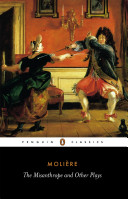 2. Plays of Molière (1622–73). Even those who generally find French literature inscrutable enjoy Molière. Tartuffe, for example, the Christian hypocrite who attempts to seduce a young virgin, inhabits the same plane of immortality as Falstaff or Don Quixote. Molière’s comedy ranges from slapstick (The Doctor in Spite of Himself is as silly, and funny, as a Punch and Judy show) to the social satire of his greatest play, The Misanthrope, in which a man’s vow never to lie collides with society’s need for “white lies.” Molière impartially mocks both sides.
2. Plays of Molière (1622–73). Even those who generally find French literature inscrutable enjoy Molière. Tartuffe, for example, the Christian hypocrite who attempts to seduce a young virgin, inhabits the same plane of immortality as Falstaff or Don Quixote. Molière’s comedy ranges from slapstick (The Doctor in Spite of Himself is as silly, and funny, as a Punch and Judy show) to the social satire of his greatest play, The Misanthrope, in which a man’s vow never to lie collides with society’s need for “white lies.” Molière impartially mocks both sides.
 3. Emma by Jane Austen (1816). The story of Miss Woodhouse —busybody, know-it-all, and general relationship enthusiast —is a comedy of manners deftly laced with social criticism. The charm largely inheres in Emma’s imperfections: her slightly spoiled maneuverings, her highly fallible matchmaking, her inability to know her own heart. Emma teeters from lovable one moment to tiresome and self-centered the next. In writing her story, Austen found an ideal venue for her note-perfect, never-equaled archness.
3. Emma by Jane Austen (1816). The story of Miss Woodhouse —busybody, know-it-all, and general relationship enthusiast —is a comedy of manners deftly laced with social criticism. The charm largely inheres in Emma’s imperfections: her slightly spoiled maneuverings, her highly fallible matchmaking, her inability to know her own heart. Emma teeters from lovable one moment to tiresome and self-centered the next. In writing her story, Austen found an ideal venue for her note-perfect, never-equaled archness.
 4. The Charterhouse of Parma by Stendhal (1839). (See below.)
4. The Charterhouse of Parma by Stendhal (1839). (See below.)
 5. Middlemarch by George Eliot (1871–72). Dorothea Brooke is a pretty young idealist whose desire to improve the world leads her to marry the crusty pedant Casaubon. This mistake takes her down a circuitous and painful path in search of happiness. The novel, which explores society’s brakes on women and deteriorating rural life, is as much a chronicle of the English town of Middlemarch as it is the portrait of a lady. Eliot excels at parsing moments of moral crisis so that we feel a character’s anguish and resolve. Her intelligent sympathy for even the most unlikable people redirects our own moral compass toward charity rather than enmity.
5. Middlemarch by George Eliot (1871–72). Dorothea Brooke is a pretty young idealist whose desire to improve the world leads her to marry the crusty pedant Casaubon. This mistake takes her down a circuitous and painful path in search of happiness. The novel, which explores society’s brakes on women and deteriorating rural life, is as much a chronicle of the English town of Middlemarch as it is the portrait of a lady. Eliot excels at parsing moments of moral crisis so that we feel a character’s anguish and resolve. Her intelligent sympathy for even the most unlikable people redirects our own moral compass toward charity rather than enmity.
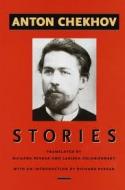 6. The stories of Anton Chekhov (1860–1904). The son of a freed Russian serf, Anton Chekhov became a doctor who, between the patients he often treated without charge, invented the modern short story. The form had been overdecorated with trick endings and swags of atmosphere. Chekhov freed it to reflect the earnest urgencies of ordinary lives in crises through prose that blended a deeply compassionate imagination with precise description. “He remains a great teacher-healer-sage,” Allan Gurganus observed of Chekhov’s stories, which “continue to haunt, inspire, and baffle.”
6. The stories of Anton Chekhov (1860–1904). The son of a freed Russian serf, Anton Chekhov became a doctor who, between the patients he often treated without charge, invented the modern short story. The form had been overdecorated with trick endings and swags of atmosphere. Chekhov freed it to reflect the earnest urgencies of ordinary lives in crises through prose that blended a deeply compassionate imagination with precise description. “He remains a great teacher-healer-sage,” Allan Gurganus observed of Chekhov’s stories, which “continue to haunt, inspire, and baffle.”
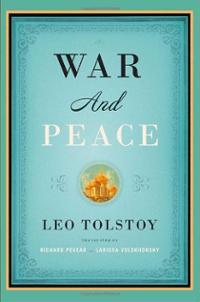 7. War and Peace by Leo Tolstoy (1869). Mark Twain supposedly said of this masterpiece, “Tolstoy carelessly neglects to include a boat race.” Everything else is included in this epic novel that revolves around Napoleon’s invasion of Russia in 1812. Tolstoy is as adept at drawing panoramic battle scenes as he is at describing individual feeling in hundreds of characters from all strata of society, but it is his depiction of Prince Andrey, Natasha, and Pierre —who struggle with love and with finding the right way to live —that makes this book beloved.
7. War and Peace by Leo Tolstoy (1869). Mark Twain supposedly said of this masterpiece, “Tolstoy carelessly neglects to include a boat race.” Everything else is included in this epic novel that revolves around Napoleon’s invasion of Russia in 1812. Tolstoy is as adept at drawing panoramic battle scenes as he is at describing individual feeling in hundreds of characters from all strata of society, but it is his depiction of Prince Andrey, Natasha, and Pierre —who struggle with love and with finding the right way to live —that makes this book beloved.
 8. The Portrait of a Lady by Henry James (1881). James’s Portrait is of that superior creature Isabel Archer, an assured American girl who is determined to forge her destiny in the drawing rooms of Europe. To this end, she weds the older and more cultivated Gilbert Osmond, and eventually finds that she is less the author of her fate than she thought. Throughout, James gives us a combination of careful psychological refraction and truly diabolical plotting. The result is a book at once chilling and glorious.
8. The Portrait of a Lady by Henry James (1881). James’s Portrait is of that superior creature Isabel Archer, an assured American girl who is determined to forge her destiny in the drawing rooms of Europe. To this end, she weds the older and more cultivated Gilbert Osmond, and eventually finds that she is less the author of her fate than she thought. Throughout, James gives us a combination of careful psychological refraction and truly diabolical plotting. The result is a book at once chilling and glorious.
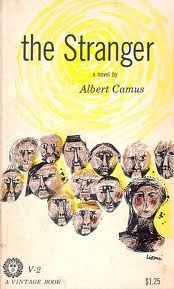 9. The Stranger by Albert Camus (1942). The opening lines—“Mother died today. Or, maybe, yesterday. I can’t be sure”—epitomize Camus’s celebrated notions of “the absurd.” His narrator, Meursault, a wretched little Algerian clerk sentenced to death for the murder, feels nothing: no remorse, love, guilt, grief, or hope. But he’s not a sociopath; he’s just honest. An embodiment of existential philosophy, he believes in no higher power and accepts that we are born only to die. Our only choice is to act “as if” life has meaning and thereby gain some freedom.
9. The Stranger by Albert Camus (1942). The opening lines—“Mother died today. Or, maybe, yesterday. I can’t be sure”—epitomize Camus’s celebrated notions of “the absurd.” His narrator, Meursault, a wretched little Algerian clerk sentenced to death for the murder, feels nothing: no remorse, love, guilt, grief, or hope. But he’s not a sociopath; he’s just honest. An embodiment of existential philosophy, he believes in no higher power and accepts that we are born only to die. Our only choice is to act “as if” life has meaning and thereby gain some freedom.
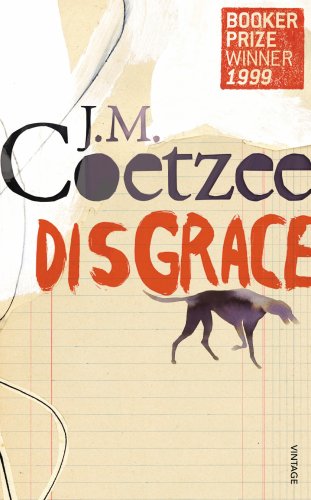 10. Disgrace by J. M. Coetzee (1999). Fifty-two years old and twice divorced, Professor David Lurie thought the affair with his student might bring passion back to his life. Instead, it costs him his job and his friends when he refuses to repent his sin. He retreats to his daughter’s farm, hoping to build on their relationship and write about Byron. But his tranquil oasis is shattered by racial violence in this uncompromising novel by the South African Nobel laureate.
10. Disgrace by J. M. Coetzee (1999). Fifty-two years old and twice divorced, Professor David Lurie thought the affair with his student might bring passion back to his life. Instead, it costs him his job and his friends when he refuses to repent his sin. He retreats to his daughter’s farm, hoping to build on their relationship and write about Byron. But his tranquil oasis is shattered by racial violence in this uncompromising novel by the South African Nobel laureate.
Appreciation of Stendhal’s The Charterhouse of Parma by Francine Prose
Opening The Charterhouse of Parma is like stepping into the path of a benevolent cyclone that will pick you up and set you down, gently but firmly, somewhere else. You can still feel the tailwind of inspiration, the high speed at which Stendhal wrote it, and you can’t help admiring its assurance and audacity.
Stendhal marks the boundaries of the more traditional nineteenth-century novel, and then proceeds to explode them. Just as Fabrizio keeps discovering that his life is taking a different direction from what he’d imagined, so the reader keeps thinking that Stendhal has written one kind of book, then finding that it is something else entirely. Stendhal writes as if he can’t see why everything —politics, history, intrigue, the battle of Waterloo, a love story, several love stories —can’t be compressed into a single novel. The result is a huge canvas on which every detail is painted with astonishing realism and psychological verisimilitude.
First, you are totally swept up in Fabrizio’s peculiar experience of the Napoleonic wars, then moved by the Krazy Kat love triangle involving Fabrizio, Mosca, and Gina, and throughout, astonished by the accuracy of Stendhal’s observations on love, jealousy, ambition, and of how the perception of biological age influences our behavior.
I love the way Stendhal uses “Italian” to mean passionate, and how he falls in love with his characters, for all the right reasons. One can only imagine how Tolstoy would have punished Gina, who is not only among the most memorable women in literature, but who is also scheming, casually adulterous, and madly in love with her own nephew. Each time I finish the book, I feel as if the world has been washed clean and polished while I was reading, and as if everything around me is shining a little more brightly.